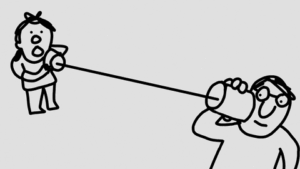
Good communication and teamwork are crucial for successful design projects. Being ethical in these areas means everyone works well together and respects each other’s input. During my internship, I experienced different collaborative settings and learned how important ethical communication is.
Ethical communication in design means:
– Giving fair and balanced feedback when critiquing another designer’s work.
– Not putting down other designers or their work.
– Encouraging fair and open competition among designers.
When working with the Disney Yellow Shoes Creative Group, collaboration was super important. Developing the strategy section of my project meant I was constantly interacting with different team members. I always made sure my feedback was helpful and respectful, focusing on the work rather than personal stuff. When using platforms like Slack, I was a bit unsure about how to talk and what tone to use at first. But as I joined in the conversations, I noticed that humor was used to make communication easier. Still, it was always important to be mindful of others’ feelings and viewpoints. When sharing my ideas, I made sure to listen actively and add to others’ thoughts without pushing my own too much.
Effective communication and collaboration are cornerstones of successful design projects. Ethical considerations in these areas ensure that all parties involved work harmoniously and respect each other’s contributions. During my internship, I navigated various collaborative environments, learning the importance of ethical communication.
Ethical communication in design involves:
– Being objective and balanced in criticizing another designer’s work.
– Not denigrating the work or reputation of fellow designers.
– Supporting fair and open competition among designers.
These principles help maintain a respectful and productive working environment, where ideas can be shared freely and criticism is constructive.



